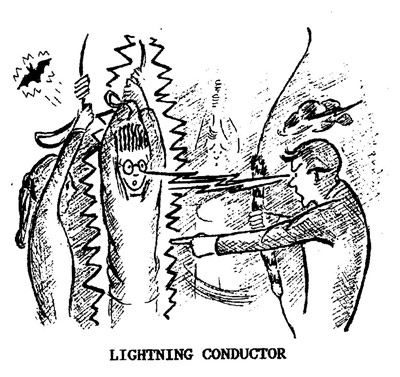Beginning to Call Methods
by Anonymous, with his kind permission
 So you can ring touches and you want to start calling them. A common and sound piece of advice is “let the bell tell you when to make your calls”. To do this you have to be aware of which bells you meet and in particular where you meet the treble. There are no shortcuts to learning to call touches without going wrong yourself.
So you can ring touches and you want to start calling them. A common and sound piece of advice is “let the bell tell you when to make your calls”. To do this you have to be aware of which bells you meet and in particular where you meet the treble. There are no shortcuts to learning to call touches without going wrong yourself.
Watching
When you are ringing try to watch where the treble is as well as your own position. If you learned “pass the treble in” rules, this should come easily once you are competent in that method.
In simple methods: the bell that leads before you, the one you take off lead, is your “course bell”; the bell following you down to lead, the one that takes you off lead, is your “after bell”; the treble cannot be either of these but might come between you and your course or after bell. Try to be aware of these bells as well. So in Doubles that leaves only one other bell and it must be coursing after your after bell and before your course bell.
On higher numbers the course and after bells become more significant. Calls will change the coursing order around and if you cannot work out who your new course and after bell are, then pick them out from where you meet them. Much practice is needed to do this and is an important part of staying right. When you become confident about knowing your before and after bells whilst you are ringing, that is the time to start calling touches.
Plain Bob Doubles
b 12345
h 21435
b 24153
h 42513
b 45231
h 54321
b 53412
h 35142
b 31524 Bob
h 13254
b 12354
h 21534
b 25143
h 52413
b 54231
h 45321
b 43512
h 34152 etc
The classic first touch you ring is likely to be “unaffected” (four blows behind) three times. You should know that before making 4 blows behind, you pass the treble in 3-4, ie when hunting up to the back you ring over the treble at handstroke (when it is in 3rds place and you are in 4ths place). Seeing this happen tells you to call a bob as you make your first blow in 5ths at backstroke. The changes above show this for calling from the 4. “b” = backstoke, “h” = guess what!
Look at the changes and you will see that for the 4:
before the bob, 2 is course bell and 5 after bell
after the bob, 5 becomes course bell and 3 becomes after bell.The other ways you might be called in 120s are:
- make the bob, run in, run out
- run in, run out, make the bob
- run out, make the bob, run in
This is often abbreviated to BIO, IOB & OBI
The bob is only called when the treble is about to lead, when it is in 2nds place at backstroke.
When to call these other positions: (you must be familiar with how these affect what you do)
- Make the bob - pass the treble in 2-3, ie backstroke over the treble when you are in 3rds, call bob immediately
- Run in - pass the treble in 4-5. It is in 4ths so wait for next backstroke to call bob
- Run out - about to pass the treble in 1-2, call bob at your backstroke lead

